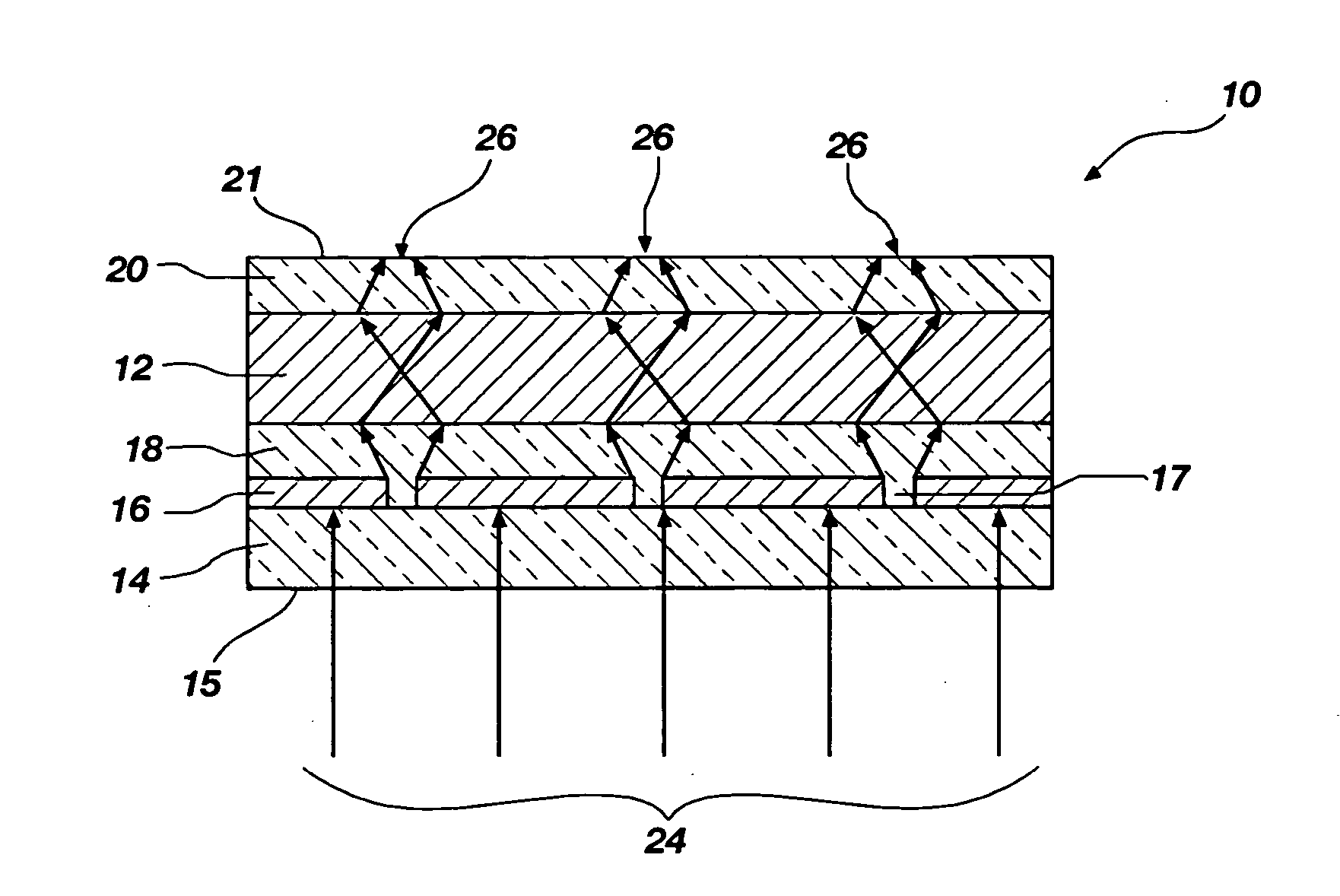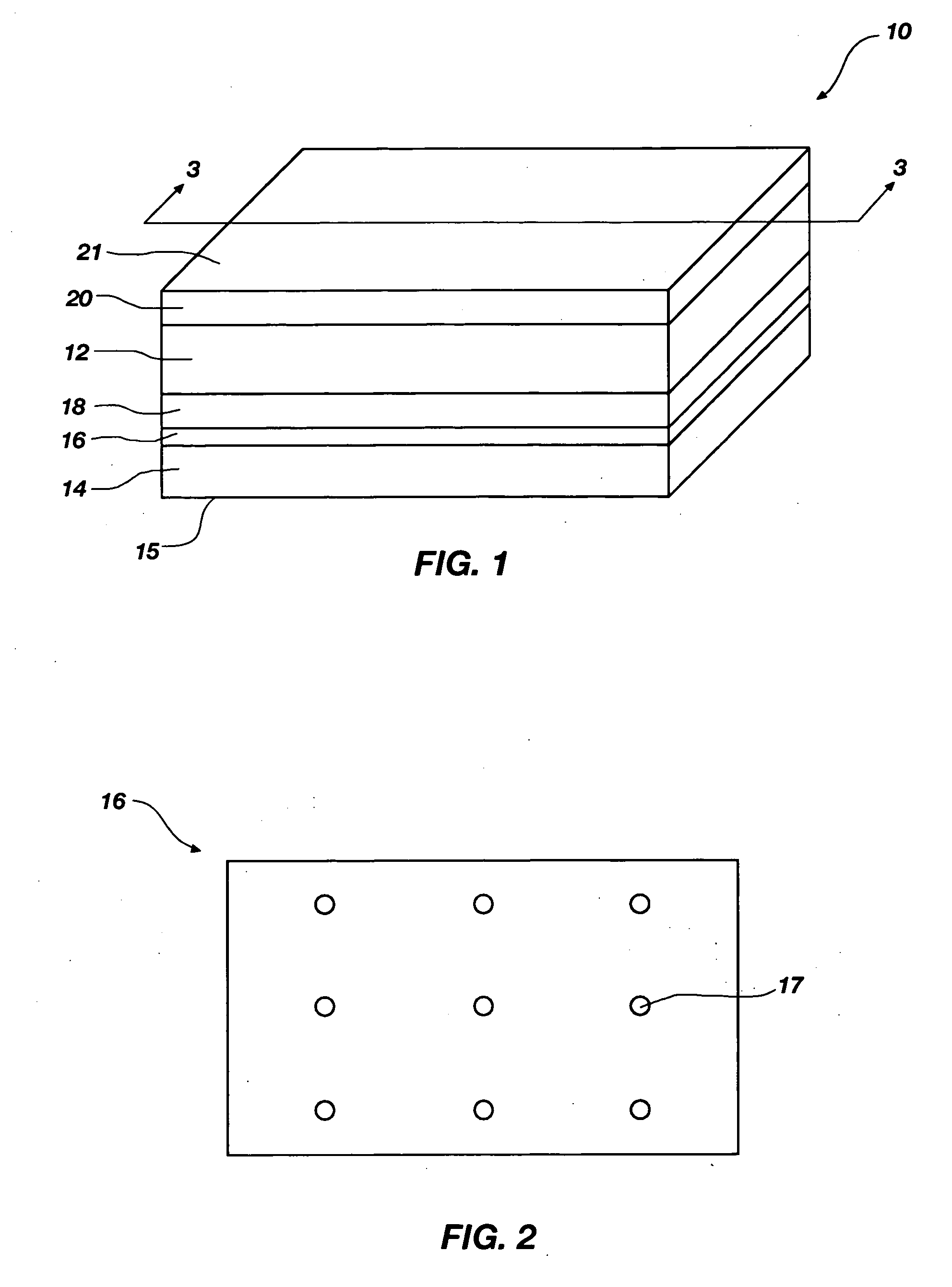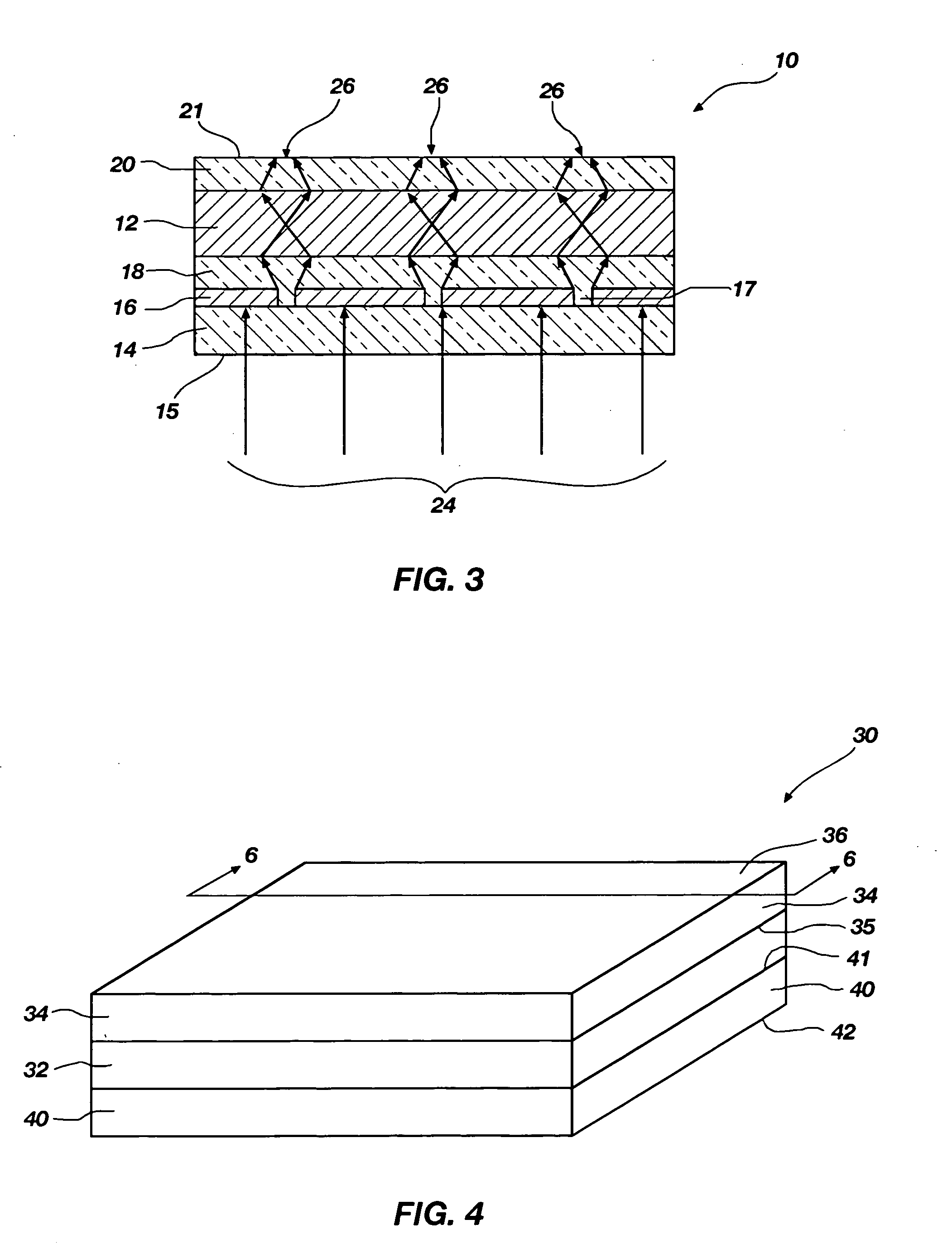Raman and hyper-rman excitation using superlensing
a superlensing and superlensing technology, applied in the field oframan spectroscopy, can solve the problems of inability to focus the incident electromagnetic radiation to a “spot size", small fraction of photons are inelastically scattered by the analyte, and the use of powerful, costly laser sources is common
- Summary
- Abstract
- Description
- Claims
- Application Information
AI Technical Summary
Benefits of technology
Problems solved by technology
Method used
Image
Examples
Embodiment Construction
[0026] The present invention relates to Raman spectroscopy. More particularly, the invention relates to Raman-enhancing structures configured to enhance the intensity of Raman scattered radiation that is scattered by an analyte, Raman spectroscopy systems including such Raman-enhancing structures, and methods for performing Raman spectroscopy using such Raman-enhancing structures.
[0027] The term “nanostructure” as used herein means a structure that includes at least one nanoparticle. The term “nanoparticle” as used herein means a particle of any shape having cross-sectional dimensions of less than about 100 nanometers. Examples of nanoparticles include, but are not limited to, nanodots, nanowires, nanolines, nanocolumns, and nanospheres. The term “analyte” as used herein means any molecule, molecules, material, substance, or matter that is to be analyzed by Raman spectroscopy.
[0028] The term “Raman-enhancing material” as used herein means a material that, when formed into appropri...
PUM
 Login to View More
Login to View More Abstract
Description
Claims
Application Information
 Login to View More
Login to View More - R&D
- Intellectual Property
- Life Sciences
- Materials
- Tech Scout
- Unparalleled Data Quality
- Higher Quality Content
- 60% Fewer Hallucinations
Browse by: Latest US Patents, China's latest patents, Technical Efficacy Thesaurus, Application Domain, Technology Topic, Popular Technical Reports.
© 2025 PatSnap. All rights reserved.Legal|Privacy policy|Modern Slavery Act Transparency Statement|Sitemap|About US| Contact US: help@patsnap.com



